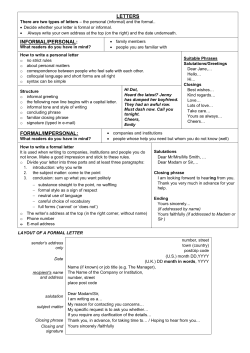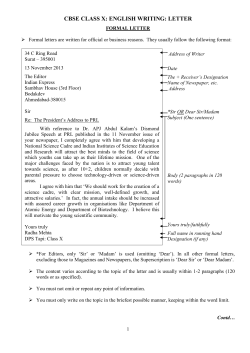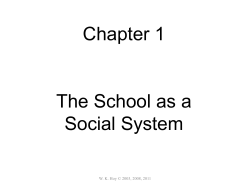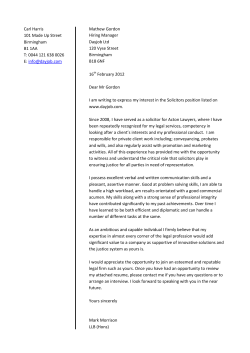
How to Write Formal and Informal Letters
How to Write Formal and Informal Letters It’s important to fully understand how to write in a formal and informal manner when preparing for exams. The correct way to write both formal and informal letters can be confusing and uncertain when you don't know the rules that employers and other professionals will expect to find in a letter addressed to them. In an exam you can be asked to write in a variety of styles and being prepared for each one is a good way of ensuring you achieve as high a grade as possible. It is easy to become confused over exactly how to set about writing a letter, as there are so many things to consider and rules to adhere to, especially when writing a formal letter. Writing a Formal Letter A formal letter needs to include, the return address in the top right hand corner, and the address of the person you are writing to written in the left hand corner, as well as the date. The greeting of the letter needs to be simply, "Dear Sir or Madam" or if you know the name of the person to whom you are writing then always write the greeting with the title, for example, "Dear Mrs Smith." With a formal letter it is always best to keep the content as succinct and professional as possible in clear paragraphs. The first paragraph of a formal letter, needs to clearly outline exactly what the purpose of the letter is, for example, to make an enquiry, complain, recommend etc. The main body of your letter needs to contain all the relevant information and details that are necessary to the purpose of your letter. Try to keep information to a minimum and concentrate on ensuring your letter reads in a logical manner and is very much to the point. The ending of a formal letter is very important to get right. If you do not know the name of the person to whom you are writing then you end the letter with, "Yours faithfully". If however, you know the name then you end the letter with, "Yours sincerely". Always sign your name below this with your full name printed below the signature. www.tutors4gcse.co.uk Writing an Informal Letter There is certainly less pressure when writing an informal letter to someone you know, for example, including an address isn't necessary though it is probably a good idea to include it in case the person receiving the letter can't remember your address. The most common greeting is still, "Dear" though it would be followed by an informal use of the person's first name. In the main body of the letter, informal language can be common, but remember to include information that is necessary to the purpose of the letter. Despite the fact that this is an informal letter, when being marked on writing styles in an exam you need to ensure you keep to the structure expected in a letter - so still make sure your letter reads in a clear manner and relevant information has been included. As with any letter, or piece of writing, spelling and punctuation is important to get right so you don't lose any unnecessary marks! It’s important to end an informal letter, though there are many acceptable ways of doing this, some examples being, "Thanks", "Yours truly" or even "Love from" - depending on who you are writing the letter to and your relationship with that person. If you feel you need help with practicing your skills for your GCSEs then you can find experienced and friendly tutors at http://www.tutors4gcse.co.uk www.tutors4gcse.co.uk
© Copyright 2025





















